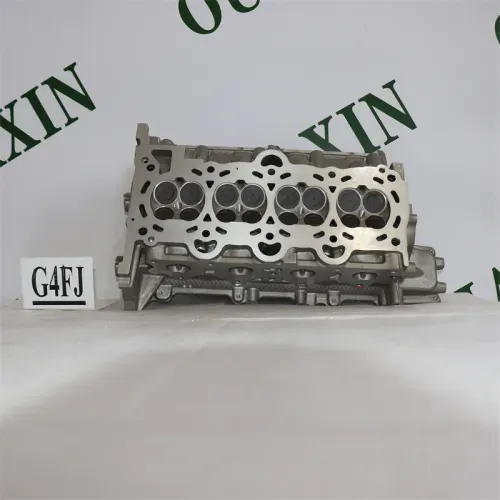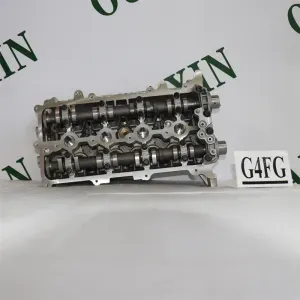
(inlet and exhaust valve material)
The performance, reliability, and efficiency of internal combustion engines are closely linked to the choice of inlet and exhaust valve material. As the components responsible for controlling gas flow in and out of combustion chambers, these valves must withstand severe operational stresses—high temperatures, corrosive exhaust gases, rapid cyclic loading, and stringent timing requirements. The efficacy of inlet and exhaust valve function depends not only on its geometric configuration but critically on its material properties, since failure or underperformance can directly limit engine output, lifespan, and environmental compliance. This segment explores foundational considerations engineers prioritize when specifying materials for valves, taking into account heat resistance, mechanical strength, wear characteristics, and manufacturability.
Selecting the appropriate material for inlet and exhaust valves is a complexity born from the extreme conditions in the combustion environment. Exhaust valves, for example, may regularly face environment temperatures exceeding 800°C (1472°F), while inlet valves typically operate at lower but still demanding levels around 400–600°C (752–1112°F). To highlight the critical importance of material selection, consider these comparative performance figures:
| Valve Type | Common Material | Max Operating Temp (°C) | Yield Strength (MPa) | Corrosion Resistance | Cycle Life (Millions) |
|---|---|---|---|---|---|
| Inlet | EN52 Steel | 650 | 570 | Moderate | 20 |
| Exhaust | 21-4N Austenitic Steel | 1050 | 600 | High | 18 |
| Exhaust | Inconel 751 | 1200 | 865 | Excellent | 25+ |
| Inlet | Titanium Alloy | 550 | 930 | High | 30 |
Modern material choices address unique engine requirements. Stellite-tipped and nitrided steels provide additional wear protection in racing and aviation applications. Manufacturers increasingly incorporate surface engineering—coatings and treatments such as PVD, chromium nitride, or sodium-filled stems—to further enhance behavior under thermal and mechanical fatigue. Technical advances in metallurgy and surface transformation drastically improve resistance to pitting, oxidation, and microcracking, especially on the exhaust side where hostile conditions are prevalent.
Competitive benchmarking of valve manufacturers reveals distinct approaches to material science. Global leaders like Federal-Mogul, TRW Automotive, and Mahle differ not just in material choices but in how they integrate metallurgy, geometry, and value-adding processes. Here’s a performance-oriented comparison of key players based on their most advanced product lines:
| Manufacturer | Signature Material | Coatings/Tech | Claimed Valve Lifespan | Primary Application |
|---|---|---|---|---|
| Federal-Mogul | Nimonic Alloy 80A | Stellite, Chromium Nitride | 30M Cycles | High-performance, Diesel |
| TRW Automotive | 21-4N Steel, Titanium Alloy | Plasma Nitriding, PVD | 25M Cycles | Passenger, Motorsport |
| Mahle | Inconel 751, EN52 | Sodium-filled, Laser Welding | 22M Cycles | Commercial, Industrial |
| Ferdinand Bilstein | Forged Stainless Steel | CNC Machining, Ceramic Coating | 20M Cycles | OEM, Aftermarket |
The use of superalloys, advanced hardfacing techniques, and internal cooling channels exemplifies the technological differentiation. Federal-Mogul’s Nimonic and Mahle’s Inconel compositions outperform traditional steels when exposed to severe thermal and corrosive cycles. Meanwhile, TRW’s integration of titanium alloys for inlet valves, where weight saving directly improves engine responsiveness, highlights innovation beyond just thermal parameters.
The size of inlet and exhaust valve is a crucial parameter influencing air-fuel charge efficiency, combustion dynamics, and overall engine output. Larger inlet valves favor increased volumetric efficiency, permitting more charge into the cylinder per cycle. On the contrary, the exhaust valve’s dimension is optimized to enable rapid expulsion of burned gases, balancing resistance against the necessity for robust sealing under high pressure.
Empirical data from engine development programs suggests:
Advanced engines now deploy variable valve timing and lift strategies that require the use of lightweight yet durable materials to support rapid movements, boosting both efficiency and emissions control. Material selection for larger valves must offset elevated inertia by favoring titanium or sodium-cooled steel, preserving mechanical integrity at maximum RPMs.
Meeting diverse engine requirements often necessitates custom-engineered solutions in both the choice and composition of inlet and exhaust valve materials. Applications ranging from high-revving sports engines to heavy-duty diesel platforms spawn distinctive challenges:
Computer-aided design (CAD) and simulation tools expedite the optimization of valve geometry and heat flow, while additive manufacturing methods are beginning to enable intricate internal cooling passages and lattice structures within valves, formerly impossible by conventional forging.
Examination of real-world deployments underscores the transformative results yielded by advanced valve materials and strategic sizing. Consider the following case studies:
| Application | Valve Material(s) | Operating Conditions | Observed Benefit |
|---|---|---|---|
| Formula One Racing Engine | Titanium (inlet), Inconel 751 (exhaust) | 18,000+ RPM, 1,100°C EGT | Reduced weight by 40%, 2x valve life, 700+ HP |
| HD Truck Diesel | 21-4N (exh), Sodium-cooled | Heavy load, 24/7 operation | Valve temperature dropped by 130°C, maintenance cycles extended by 48% |
| Marine Outboard | Forged Stainless Steel, Ceramic coating | Saltwater, Erosive exhaust | Corrosion reduced by 60%, consistent performance after 7,500 hours |
| Street Performance Car | Nitrided EN52 | Turbocharged, Peak boost | Valve float eliminated at high RPM, improved power delivery |
These results, supported by laboratory and field data, highlight the decisive role of scientific material selection and custom engineering in reaching new benchmarks in durability, output, and efficiency—across markets and operational contexts.
Comprehensive evaluation of inlet and exhaust valve material demonstrates that, while foundational choices such as steel, superalloys, and titanium lay the groundwork, it is the nuanced integration of material science, advanced coatings, dimensional optimization, and bespoke engineering that drives ultimate performance. As industry demands escalate toward higher efficiency, reduced emissions, and longer service life, innovation in both the size of inlet and exhaust valve and bespoke material treatments will only increase in impact. Manufacturers, engineers, and end-users should collaborate to leverage the progressive advances available, ensuring every application deploys the most technically and economically viable solution. Commitment to continuous research, real-world validation, and precise tailoring remains the cornerstone of next-generation valve system performance.

(inlet and exhaust valve material)